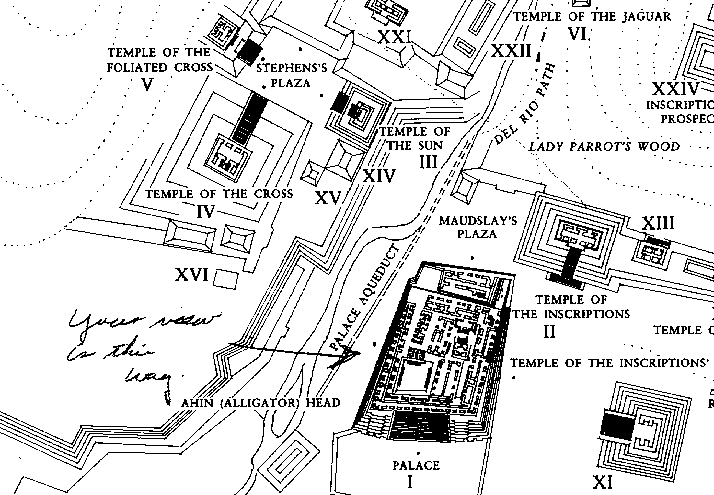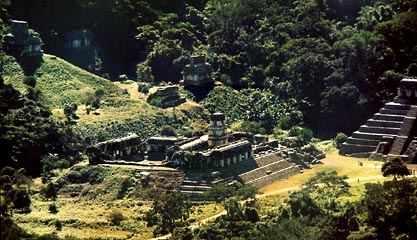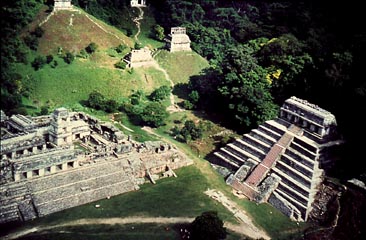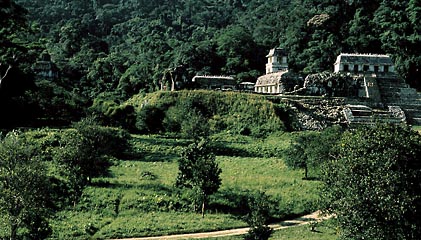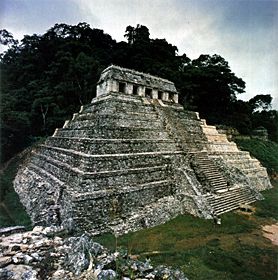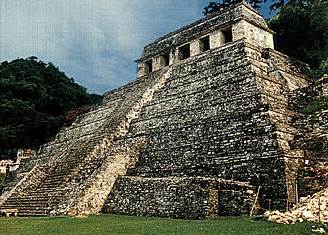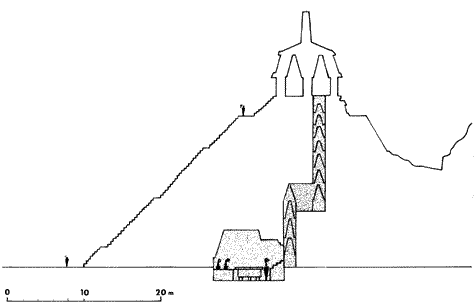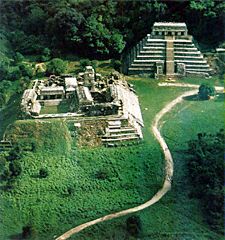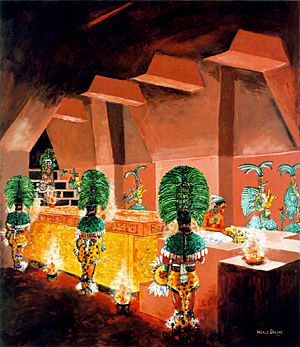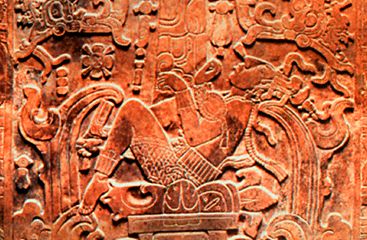Lazarus Long,
Thanks for the feedback. We are coming at this subject from two very distinct backgrounds. That is good because much can be learned this way.
I've seen one book on the subject about 5 years ago in a very large public library.
The legendary oral traditions (e.g. living in harmony with our Mother Earth) which reportedly came from the cosmos, may have been preserved a lot more than realized, but they never were nor are for sale.
The article below states, "The Maya revere each animal and plant."
When I entered the woods as a lad in Illinois, I was told that the woods was sacred because the life within the woods was sacred.
Check out the term "four cardinal points".
bob
http://home.att.net/...tional_ways.htm

(excerpts)
Many of the Mopan and Q´eqchi´ Maya practice the traditional ways that have been in existence for many generations. A sampling of these practices is described on this page. For a comprehensive examination of the traditional lifestyle of the Maya, order The Living Maya.
Connection To the Earth
What does it mean to have a spiritual connection to the land? For the Maya it means that they think about their natural environment in a certain way, they interact with nature in a certain way, and they engage in rituals that offer respect to the forces of nature. The Maya are one of many indigenous cultures around the world that engages in what is known as a nature-based religion.
When the Spanish arrived in Central America they forced the Maya to become Christians. The Maya were called pagans and mistreated if they did not adhere to the Christian doctrine that Spanish friars required them to follow. As the Maya converted to Christianity, they developed a blend of beliefs that included the Roman Catholic Church and their ancient religion. With the exception of the Maya who are part of the Protestant denominations that were brought into the area in the 1970s, many of the ancient beliefs and rituals are still practiced today.
Spiritual significance is found in all living things. The Maya revere each animal and plant. One tree - the ceiba or cottonwood tree - holds special significance as the Maya use it as a symbol of the power of nature. Symbolically, the branches hold up the sky and the roots keep the earth together. The copal tree is sacred as well, as it produces the resin and the bark that are burned in censers during spiritual ceremonies.

The "four corners of the earth" or the earth's cardinal points are also important to the Maya; they are even associated with specific colors. The colors of blue and green are also important as they signify the sky and the environment.
The four corners are important when praying; for example, a man may look to or turn to all four corners as he prays in his milpa prior to planting his corn.
Agriculture
The Maya are sustained by their use of the land for agriculture. The land where their sustenance is cultivated begins right outside their front door and expands over a very broad area of their village. Herbs used in cooking are often grown in pots next to their homes. Orchards of oranges and fruit trees may be close to the residence or closer to farmland. Farmland begins outside the center of the village and may be as far away as a two-hour walk.
There are several types of farmland that involve different crops and cultivation methods. A milpa is a plantation that has been cut from the bush and burned before it is planted, a technique known as slash-and-burn. The fire releases nutrients back into the soil.
Corn
For the Maya, agriculture represents a cultural connection to the land as important as traditional languages, arts, and ceremonies. Key to that connection is corn.
The cultivation of corn is connected ecologically, socially, and spiritually to Mayan culture. Sacred spiritual rituals specifically concerning the burning of a milpa, selection and use of seeds, and the actual planting of the corn have existed since the time of the ancient Maya.
Cacao
There is also a cultural significance to the cacao (cocoa) bean. In ancient times cacao beans were used as currency. Today the drink made from the ground bean is served regularly during family and community gatherings. Finally, cacao trees are of such importance that they are passed from one generation to the next as part of a family's inheritance.
Healing
Healing traditionally includes spiritual practice. This practice connects the person who is sick, the healer, and the spirits of nature. Healers feel that cures will not work unless both the healer and the patient are "thinking as one." Very few traditional healers simply grow herbs and dispense them to friends and family without there being a spiritual element involved.
Most individuals come to traditional healers for problems they themselves cannot cure. Most village elders have a working knowledge of the herbs for common health problems they have experienced over the years. A trip to a traditional healer - commonly called a bush doctor - occurs when a family member does not get well after a period of time.
A healer is usually one who:
o has the knowledge of how to use herbs to effect positive change in the body
o has a deep reverence for nature and practices traditional spiritual rituals
o apprenticed with a village elder in his younger years
Traditional healers spend time gathering herbs that grow wild in the rainforest. Some herbs grow near rivers and streams while others grow near hilly areas. A traditional healer has a keen eye for the plants he intends to gather. Prior to cutting the plant he says a prayer requesting permission for the plant to be cut.
A traditional healer may use several diagnostic techniques, including investigating an individual's symptoms, prayer, and using a stone - a sastun - at which the healer gazes during a period of meditation. The most famous contemporary Mayan healer in Belize, Elijio Panti of the Cayo District, also used a patient's pulse to form a diagnosis. Treatments include the use of herbs in either a tea or a poultice, instructions to engage in a particular behavior (such as staying inside or saying certain prayers), or a combination of the two.






















































